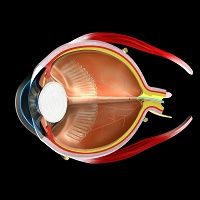Article
C-Reactive Protein May Be a Biomarker for Diabetic Retinopathy
Author(s):
Study results suggest that C-reactive protein levels might be used as a biomarker to determine the severity of diabetic retinopathy. To this point, such a connection has remained controversial.

A review in PLOS One suggests that C-reactive protein (CRP) levels might be used as a biomarker to determine the severity of diabetic retinopathy (DR). To this point, such a connection has remained controversial.
DR is a very common complication of diabetes mellitus (DM) and is the leading cause of visual deficits and blindness around the world. DR can be divided into two stages: non proliferative diabetic retinopathy (NPDR) and proliferative diabetic retinopathy (PDR). Typical changes seen in NPDR are micro-aneurysms, intra-retinal hemorrhages, cotton-wool spots, and hard exudate.
According to the severity of the lesions, NPDR can be subdivided into mild, moderate, and severe stages. As it progresses, DR enters into the PDR stage. “Inflammation seems to be very important in the development of DR,” the reviewers note.
C-reactive protein (CRP) is an acute-phase protein and is mainly synthesized by the liver or adipose tissue when microbial invasion or tissue injury occurs. Its measurement is useful in clinical practice for the diagnosis and treatment of some acute or chronic inflammatory conditions, but its role in the pathogenesis of DR is still unknown, and clinical studies to date have been inconclusive and, in some cases, contradictory.
The authors reviewed PubMed, EMBASE, and Web of Science to identify all studies that compared the CRP level of two groups (case group and control group). Two cross sectional studies and twenty case control studies including a total of 3,679 participants were identified. After pooling the data from all 22 studies, obvious heterogeneity existed between the studies, so a subgroup analysis and sensitivity analysis were performed.
Removing the sensitivity studies, the blood CRP levels in the case group were observed to be higher than those in the control group [SMD = 0.22, 95% confidence interval (CI), 0.11—0.34], and the blood CRP levels in the PDR group were also higher than those in the non-proliferative diabetic retinopathy NPDR group [SMD = 0.50, 95% CI, 0.30–0.70].
Limitations include some studies that may have been missed, fewer studies based on type 1 diabetes, and that the standard of the stage of DR was not uniform across studies. “Large-volume, well-designed studies should be considered and conducted to validate the current results,” the study authors concluded.





